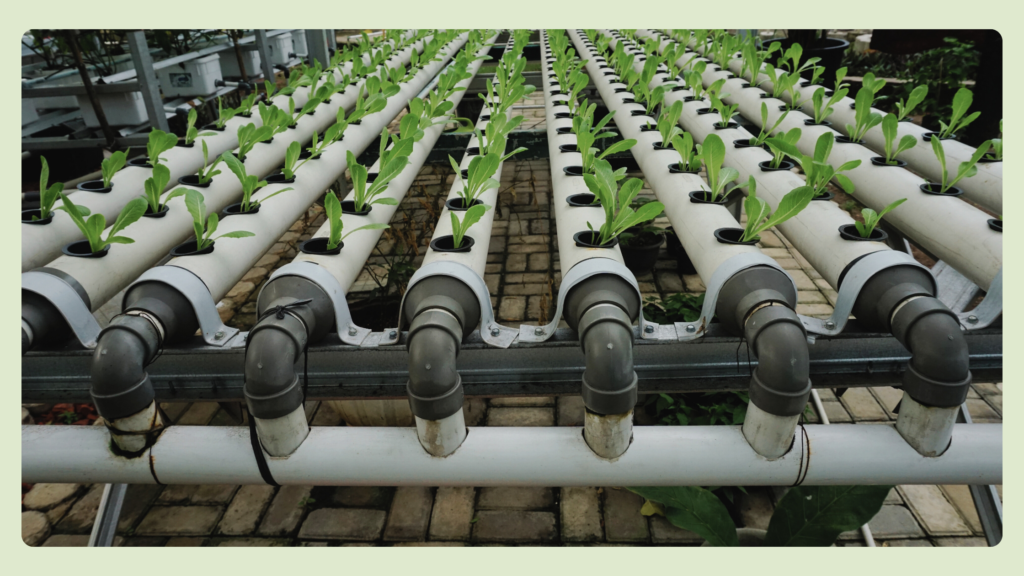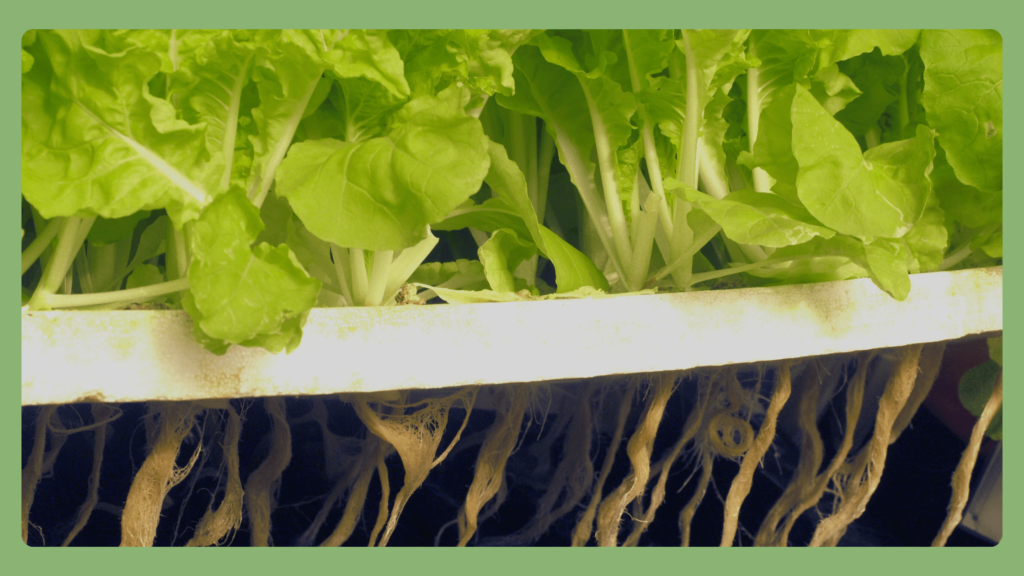It can be a challenge growing hydroponics root vegetables as their edible parts are submerged in water. Their roots are constantly in touch with water which can risk root diseases. Thus a deep water culture is not the ideal option here. Instead, root crops need a hydroponic system that provides dry periods for proper aeration and has enough depth to support downward growth.
Why Ebb and Flow Works Best for Root Crops
The ebb and flow system is one of the best options for growing hydroponics root vegetables as it allows you to control the water flow. It also lets you provide dry sessions in between to keep the roots well-aerated and prevent rot. It can be easily set with the following items.
- Deep containers allow the crops to grow downwards.
- Net cups that are large enough to support the plants.
- A moisture-retaining substrate (like coco coir or clay pebbles) to reduce watering frequency.
Different crops may need slight adjustments. Beets and potatoes can grow well in a standard ebb-and-flow setup, while carrots will need deeper containers and a more suitable substrate.
Smart Use of Perlite
Root crops such as carrots, onions, etc need spacious containers to grow straight and deep. Using the wrong substrate or container can lead to misshapen or “forked. carrots. Substrate such as perlite is an ideal choice for root crops.
- It provides good aeration and supports deep-root growth.
- Perlite has ideal moisture retaining capacity that prevents root rot or drying of roots.
- Perlite does not clump preventing smooth root growth.
A great way to grow these crops is to use deeper flower pots filled with perlite. You can water them manually from the top, just like you would with soil. Place a tray beneath the pots to catch excess water, and the perlite will draw moisture from the tray as needed.
Tips for Growing Root Crops Hydroponically
- Give Plants Enough Space
Root crops need space both above and below the surface to grow properly. Avoid overcrowding—it’s best to grow only 2-3 plants per container.- Carrots need deep containers more than wide spacing.
- Ginger and similar crops need extra space between plants to allow their rhizomes to grow big and healthy.
- Provide Sufficient Light
Most root crops require 10-12 hours of light daily to grow well. You can use grow lights if your space doesn’t receive sufficient natural sunlight. - Avoid Transplanting
Root crops do not respond well to transplantation. So you need to ensure that the plant is planted in its final container that is big enough for the crop. It will help avoid any kind of disturbance during the growth period. - Watering Schedule
To avoid root rot and other unexpected issues, it is essential to keep a water schedule. It varies with the type of corp. The important points to remember are given below.
- Ensure that the substrate does not hold water too much.
- The roots should not be sitting in water for long periods.
- Both scenarios can lead to root rot.
- It would not be ideal to leave the substrate dry for long either. Maintain a watering schedule that avoids excess water in the substrate and avoids excessive drying as well.
- Media and Nutrients
Root crops do not require too much amount of growing media and use fewer nutrients when compared to other types of plants. This makes them easier to maintain in a hydroponic setup. However, they still require regular fertilization with liquid fertilizers. To ensure proper growth, you must add them only in the recommended amount. - Check Temperature and pH
Research the ideal temperature and pH levels for each crop before planting. These factors are critical for healthy growth and good yields.
Best Root Vegetables to Grow Hydroponically
- Carrot
- Radish
- Beetroot
- Ginger
- Turmeric
- Turnip
Conclusion
When growing root crops hydroponically, it is essential to choose the right system and provide proper care to the plants. The ebb and flow method would be an ideal choice. The substrate can be perlite or clay balls for the root crop. Just remember to give them space, light, and the right watering routine. Once you master it, you’ll have fresh, homegrown root vegetables right at your fingertips!




